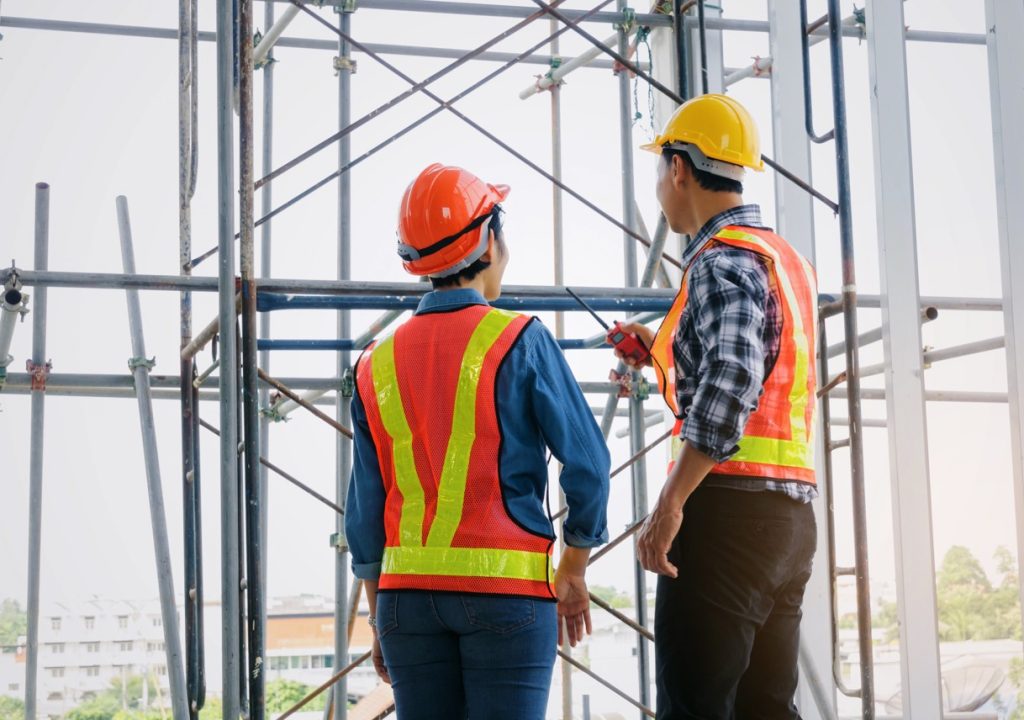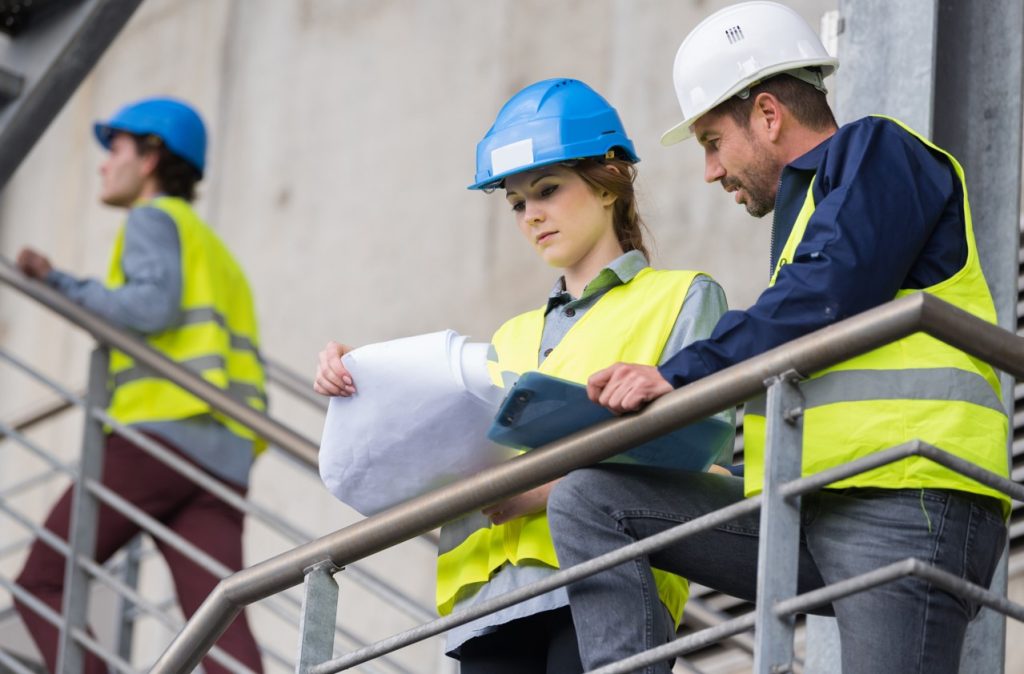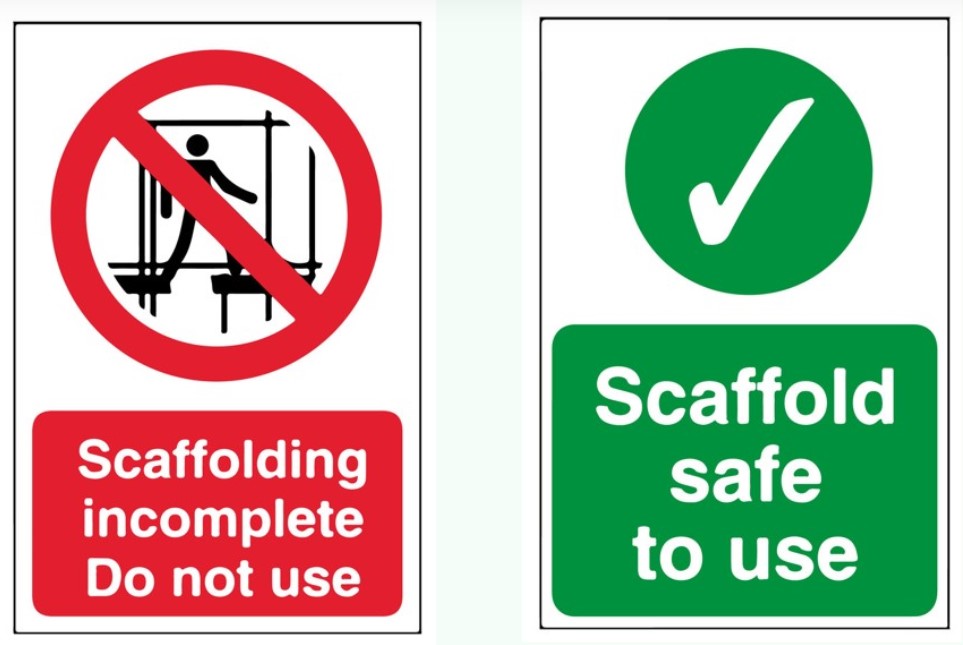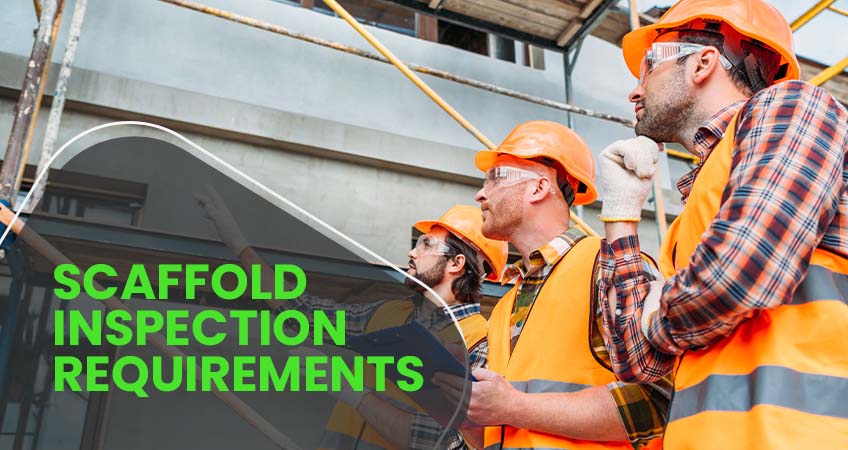Scaffolding is an essential component of many construction sites, enabling workers to safely access high and hard-to-reach areas during projects. However, scaffolding safety isn’t something to take lightly—it requires diligent inspections and adherence to regulations to ensure the protection of everyone on-site.
At B-Mat Scaffolding, safety is central to everything we do. This post will provide in-depth guidance on scaffold inspection requirements, helping construction managers, site supervisors, and safety inspectors maintain the highest standards on their sites. From understanding legal standards to the inspection process and documentation, we’ve got you covered.
Legal obligations and standards

To operate a safe worksite, it is crucial to understand and comply with the relevant laws and standards governing scaffold safety.
Work at Height Regulations 2005
The Work at Height Regulations 2005 (WAHR) remain the principal legislation for scaffolding safety in the UK, enforced by the Health and Safety Executive (HSE). According to WAHR:
- Scaffolds must be inspected before their first use, weekly, and after any event (e.g., strong winds) that could affect their safety.
- Inspection reports must be completed and shared with the client or employer within 24 hours.
- Inspection reports must be securely maintained for three months after the construction work is completed.
Additionally, the NASC SG4:22 guidance on preventing falls in scaffolding operations supplements these regulations, providing industry best practices to reduce risk.
Failing to meet these health and safety regulations & standards could have severe repercussions, including legal penalties and, more importantly, endangering lives on-site. Ensuring compliance is non-negotiable for responsible scaffolding management.
Frequency and timing of inspections
Scaffold inspections must follow a specific schedule to mitigate risks and ensure compliance:
- Before first use
When fitting scaffolds, a structure must be inspected after its erection and before any workers use it. This ensures the structure is fit for purpose and that safety measures are in place. An initial inspection report should then be presented and kept on record.
- Weekly inspections
Regular inspections every seven days are required to guarantee ongoing safety, especially as working conditions and scaffold usage change over time.
- After events affecting the scaffold’s integrity
Unusual events, such as extreme weather, unauthorised modifications, or significant impacts, can compromise scaffolding stability. Inspect and secure these structures immediately before any work resumes.
By sticking to this timeline, you can help prevent accidents and ensure consistency in on-site operations.
Who can conduct inspections?

Scaffold inspections are not a task for just anyone—they must be conducted by a competent person with the necessary knowledge, training, and experience.
Competence and qualifications
The HSE stipulates that inspectors must hold qualifications and experience appropriate for the scaffold’s complexity. Most commonly, this involves a CISRS scaffold inspection qualification.
A CISRS (Construction Industry Scaffolders Record Scheme) qualification exists at multiple levels:
- Basic scaffold inspection course – allows for assessment of basic scaffold structure.
- Advanced scaffold inspection course – allows for assessment of a more complex structure e.g system scaffolds.
A valid CISRS Scaffold Inspection Training Scheme (SITS) certificate assures contractors that the inspector is a “competent person” and up-to-date on the latest regulations.
When selecting an inspector, verify their qualifications and practical experience to ensure high standards of inspection accuracy.
The inspection process
A thorough scaffold inspection should follow a structured checklist to cover every aspect of the structure’s safety. Here’s what inspectors should assess:
- Foundations: Check for secure and level bases to prevent sinking or shifting.
- Standards, ledgers, and transoms: Inspect vertical and horizontal components for signs of deterioration, bending, or improper assembly.
- Bracing and tying: Ensure the scaffold is adequately braced and tied to the supporting structure for stability.
- Boarding and Platforms: Confirm planks and surfaces are in good condition, securely fixed, and capable of supporting the required loads.
- Access points: Ladders and staircases should be stable and unobstructed.
- Guardrails and toe boards: These must be present at all heights to reduce fall risks.
- Weatherproofing: Evaluate for protective measures against weather, particularly in case of high winds or storms.
Using technology to complement inspections is becoming increasingly popular. Mobile apps, like the SMART Inspector app, streamline the inspection process with step-by-step guidance, photographic evidence, and instant report generation. Such technology enhances consistency and reduces the risk of oversight.
Documentation

Proper documentation is critical for effective scaffolding management and safety compliance.
Scaffold inspection report
Inspections must be documented in a detailed report that includes:
- Inspector and client details.
- Scaffold description and location.
- Date and time of inspection.
- Issues identified, actions taken, and recommendations for further action.
These reports must be securely maintained, initially on-site and then within company records for three months post-project completion.
Scaffolding handover certificates
Although not a legal requirement, scaffolding handover certificates are considered best practice. They document that the scaffold was inspected and deemed fit for use. This certificate can also serve as the first inspection.
Scaffold tagging

Scafftags, or scaffold safety tags, visually communicate whether a scaffold is safe to use or not. While not mandatory, tagging can help create clarity for site workers, reinforcing whether a platform is complete, inspected, and compliant.
By keeping all records in order, you can provide a clear audit trail in case of accidents or disputes.
FAQ
What is the scaffold inspection training scheme?
The CISRS Scaffold Inspection Training Scheme (SITS) is a training program for those responsible for inspecting scaffolding structures. It provides the necessary knowledge and skills to conduct thorough inspections, ensuring compliance and safety on construction sites. The course covers a range of topics, including scaffold components, common faults, and relevant regulations.
Do I need to be certified to carry out scaffold inspections?
Yes, according to HSE regulations, an inspector must be a “competent person” with appropriate qualifications and experience. Holding a valid CISRS SITS certificate is generally accepted as proof of competence in scaffold inspection.
Who is classed as a “competent person”?
A competent person is someone who has the necessary knowledge, training, and experience to carry out a specific task or responsibility effectively. In the case of scaffold inspections, this would include having relevant qualifications such as a CISRS SITS certificate and practical experience in inspecting scaffolding structures.
It is important to only entrust scaffold inspection duties to individuals who are deemed competent by industry standards. So, it is essential to verify an inspector’s qualifications and experience before hiring them for any scaffold inspection tasks. By doing so, you can ensure that the inspections are carried out accurately and in compliance with regulations, ultimately promoting safety on construction sites.
Thoroughly inspected, properly protected
Regular scaffold inspections are essential in safeguarding construction workers and maintaining a safe, compliant site. Beyond avoiding penalties, these inspections play a crucial role in fostering trust, minimising risk, and enabling your teams to work at height confidently.
At B-Mat Scaffolding, we understand that safety is non-negotiable. Our team of scaffolding experts has decades of experience in scaffold design and delivering safe, high-quality scaffolding solutions.
Whether you need advice, routine inspections, or fully managed scaffolding services, we’re here to support you.
Get in touch with B-Mat Scaffolding today to learn how we can protect your teams and projects.


